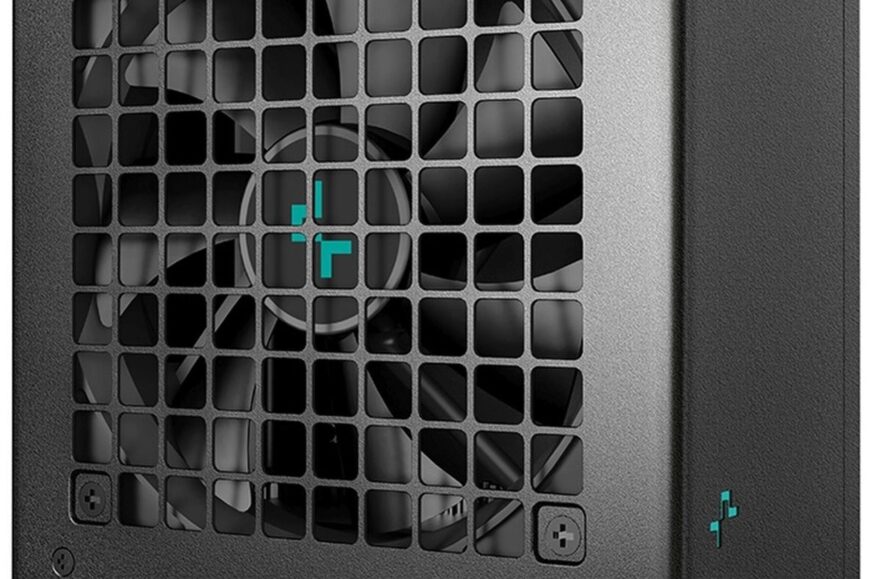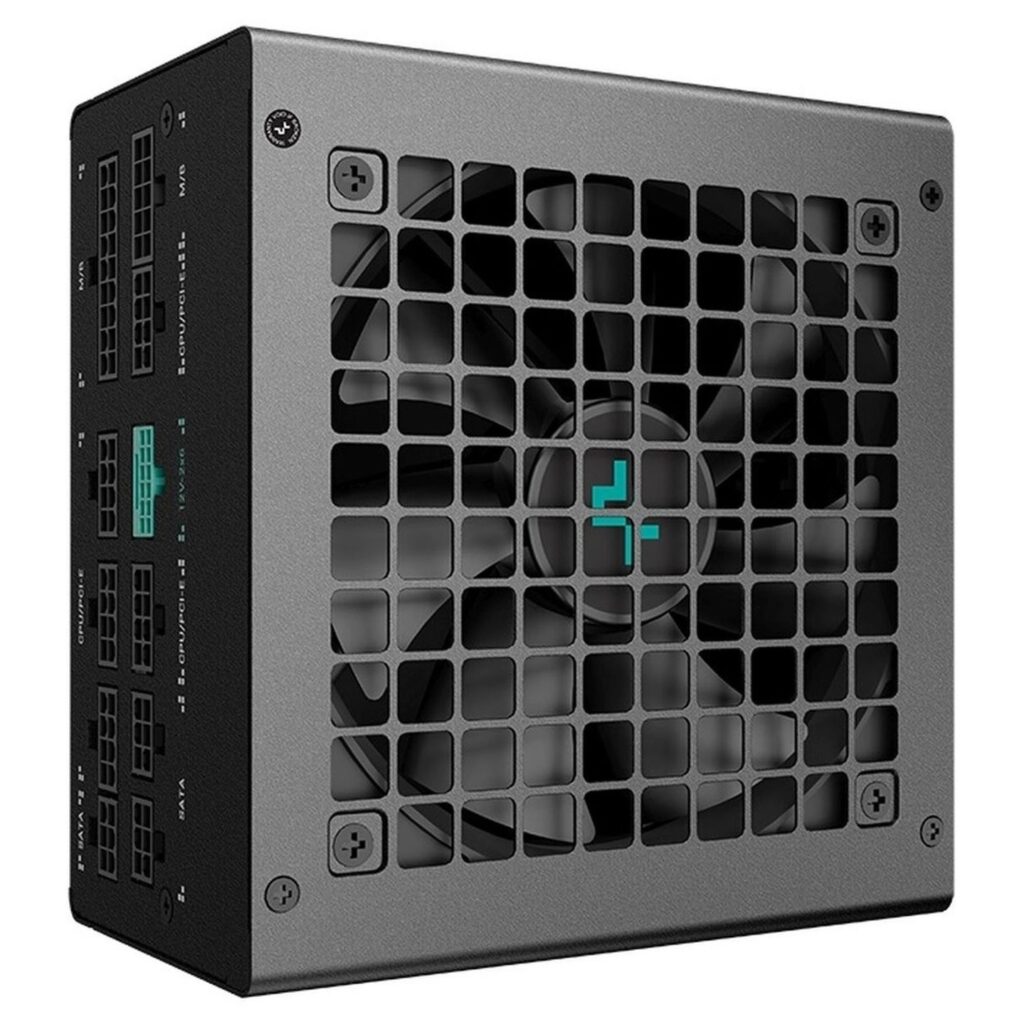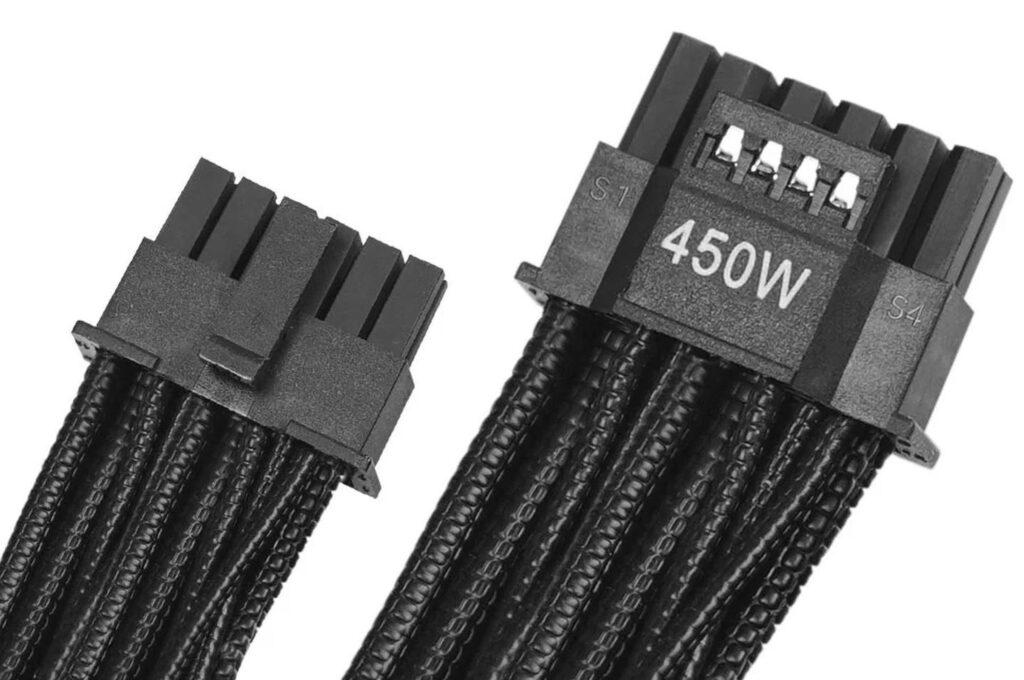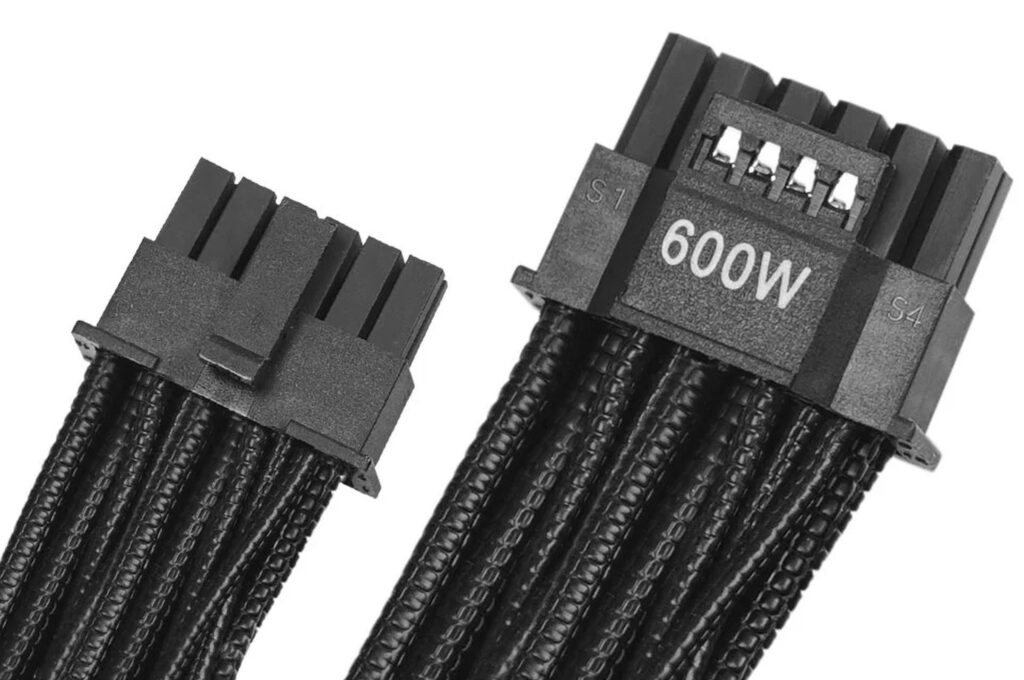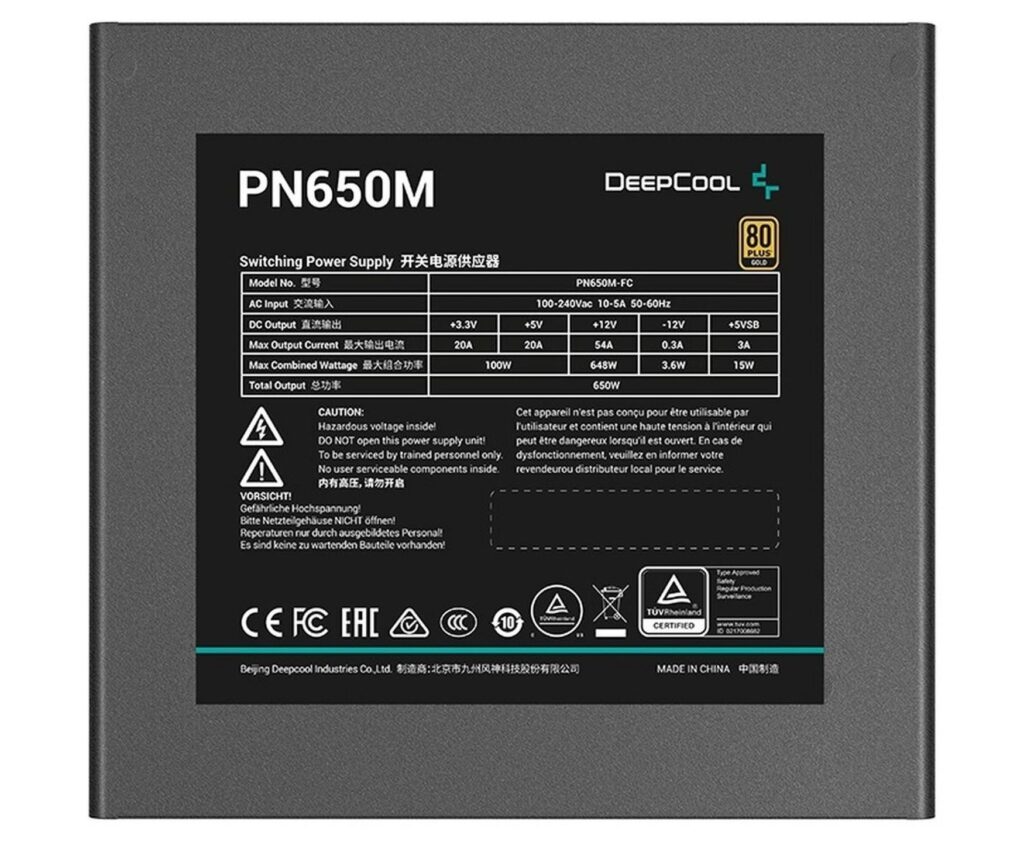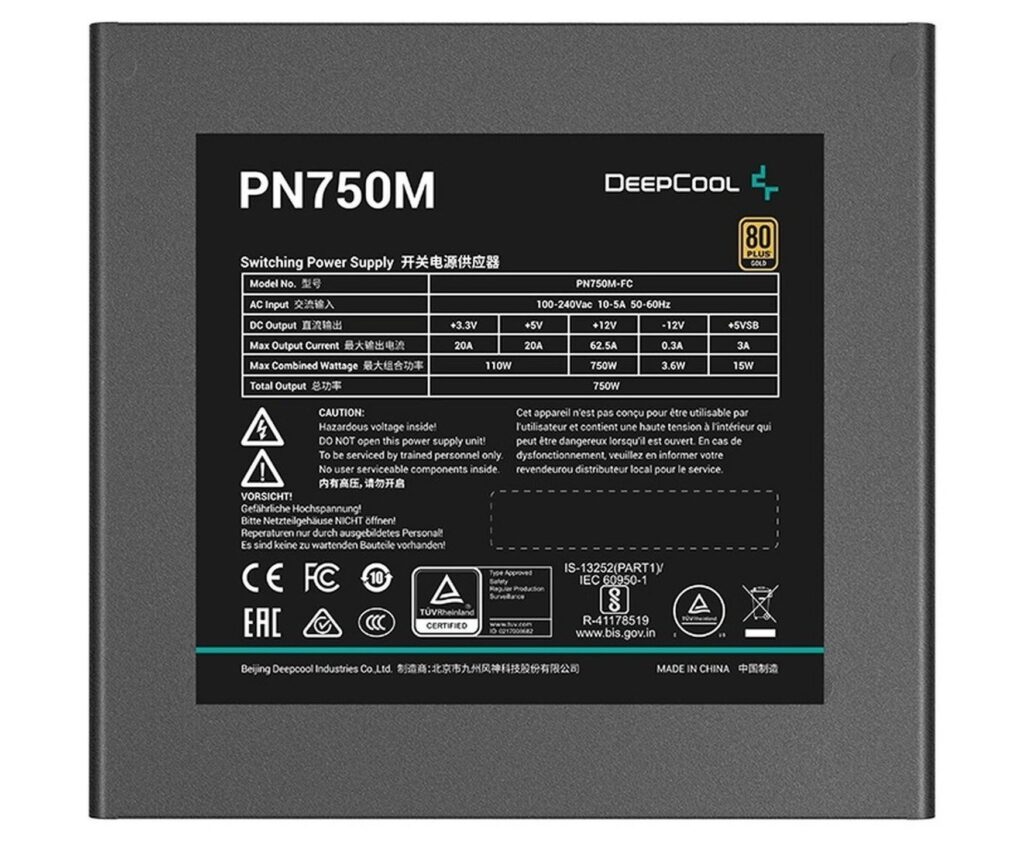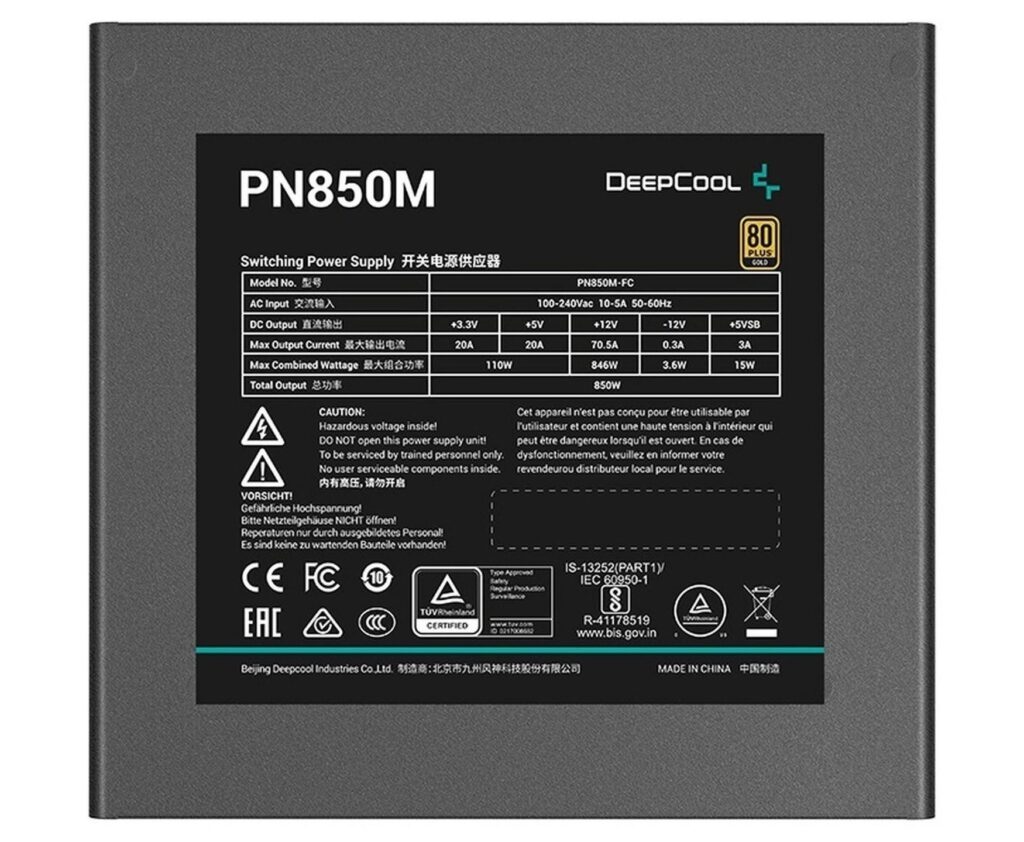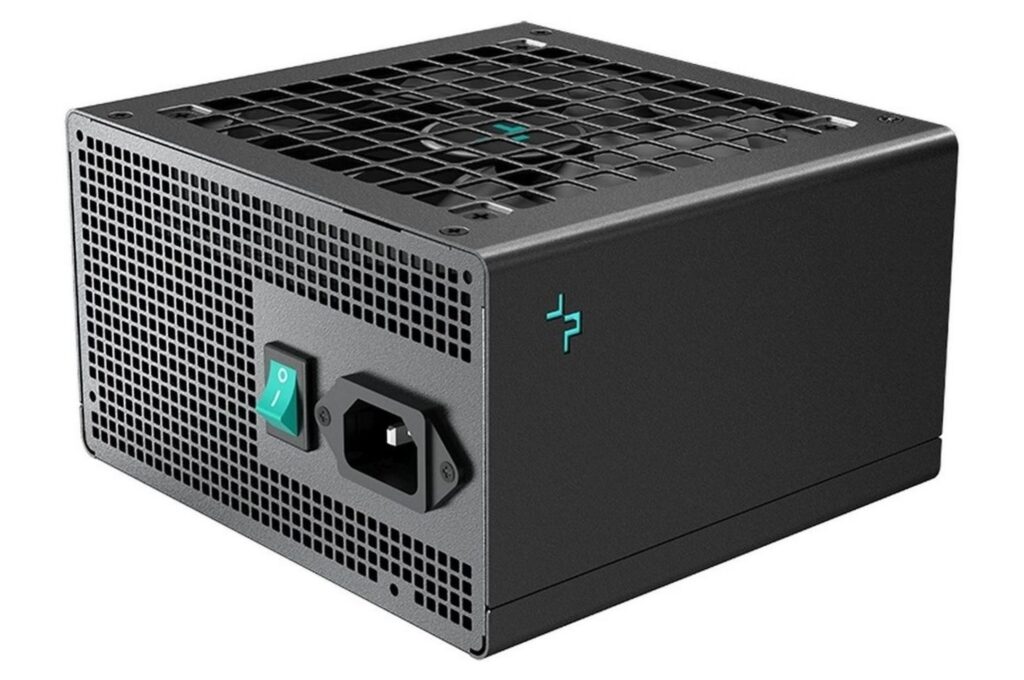DeepCool PN-M
Upgrades towards the ATX 3.1 standard (from ATX 3.0) can be expected in the next period from leading PSU brands. Each will take on this task in different ways, for DeepCool it is now the release of the new PN-M model series. It represents the mid-range, characterized by the 80 Plus Gold or Cybenetics Gold efficiency rating, modular cabling and an output range of 650–850W.
DeepCool also responds to the particularly higher security requirements in connection with the 16-pin PCIe connector. The new PN-M PSUs come with ATX 3.1 support, which compared to ATX 3.0 primarily means native support for the 12V-2×6 connector, also referred to as PCIe 5.1.
The main benefit of the 12V-2×6 connector over the older connectors (12VHPWR) is in the shortened sense pins. This change is related to the fact that the connector on the cable has to be inserted deeper into the device in order to provide power. This is a safety precaution against higher temperatures, which occurred with the older 12VHPWR connector due to higher transient resistance due to incomplete insertion.
The 12V-2×6 connectors with shorter sense pins must be inserted virtually all the way to the stop if the device is to work. You can already see 12V-2×6 connectors on graphics cards since about the middle of last summer (2023), but it is important that this new connector is also on the PSU side, i.e. on the panel to which the cables connect. This is also the case with the DeepCool PN-M power supplies, which are completely modular.
PSU manufacturers also emphasize “better” 12V-2×6 cables, but what exactly that means in terms of design is hard to say. For PN-M DeepCool PSUs they talk about a significant improvement, but for example the gauge of the wires is the same as it was for 16-pin PCIe connectors in the past – AWG16. Still, there may be multiple changes within the hollows. These are a bottleneck from a heating perspective, as the thermal imaging test of twelve different 12VHPWR cables showed.
The PCIe 5.1 cables should probably not differ in design across PSUs, but again they come with different power designations – 450 W and 600 W. The “only” 450-watt cables will ship with models with sustained power specified at 650 watts (PN650M) and 750 watts (PN750M). With the 850 W variant (PN850M), however, there is already a “600-watt” cable.
Again, this is not to say that cables of weaker power supplies would be rated for lower current loads, but it is because of Intel’s ATX 3.x recommendations. According to them, 600W cables should not be paired with power supplies that risk not handling combined load with a CPU that is also powered by the 12-volt rail. So it’s a kind of prevention against instability that could occur.
As with ATX 3.0 power supplies, ATX 3.1 power supplies are designed to handle peaks (for 100 μs) of twice the sustained load. For DeepCool PN-M power supplies it is either 54 A (PN650M), 62,5 A (PN750M) or 70,5 A (PN850M).
All DeepCool PN-M power supplies are designed to achieve at least 90% (115V) and 92% (230V) efficiency in the optimum efficiency band at 50% load. Furthermore, at critical points, “105°C” Japanese capacitors are used and with a length of 140 mm these are relatively short PSUs. As far as compatibility with cases is concerned, it will be above standard. All the usual overload (OPP), overvoltage (OVP), overtemperature (OTP) and other protections (SCP, OCP, UVP, NLO, SIP) are also present. Behind the grille with larger square cut-outs is a 120 mm fan with fluid dynamic (FDB) bearings.
DeepCool PN-M power supplies are available in stores starting March 26, 2024 at the suggested prices of 90 EUR, 100 EUR and 110 EUR.
We also have a more detailed article on the ATX 3.x standard. There are some changes with ATX 3.1 compared to ATX 3.0, but they are relatively few. Apart from the cable requirements (12V-2×6), there’s then the hold-up-time, which is lower, more benevolent under ATX 3.1 (12 ms instead of 17 ms), which can be considered a negative.
English translation and edit by Jozef Dudáš
- Contents
- DeepCool PN-M





